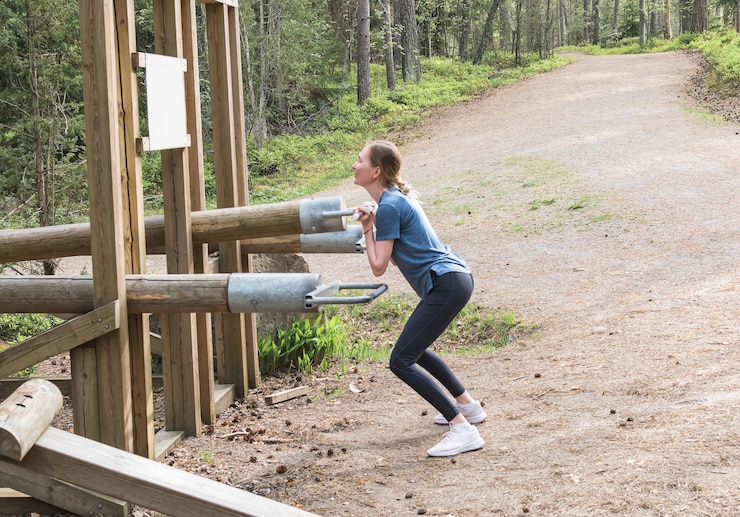In this world of fast-living and changing people, we need to do more running practice to withstand those unpredictable challenges. Here we have Usain Bolt, the fastest runner of our age. But it would help if you do not worry; you can also do those things, such as world records and memories. You only need some necessary practice to build stamina and endurance. In this blog, we will dive into the world of vast techniques and practices for running to make you unstoppable.
Tips for running practice
1. The Easy Run
Running practice is the most important thing for developing a stunning and charming body to leash the challenges of running in the marathon. The easy run, often neglected in favour of faster paces, deserves a starring role in your training plan. Think of it as the foundation upon which all your other workouts are built. These easy miles, making up 65–80% of your total mileage (depending on your philosophy), act as a magic potion for runners. They build endurance, solidify proper form, establish a consistent running routine, and aid recovery. The key to mastering the easy run lies in the conversational pace. It should feel like a relaxed chat with a friend, allowing you to exchange ideas or sing along to music without feeling winded. If the conversation becomes a struggle, you’ve crossed the threshold into a more demanding zone. Ease off the gas and return to that comfortable, chatty pace. Think of these easy runs as practice runs for your longer efforts. By building a strong aerobic base through consistent, easy runs, you’ll set yourself up for success when tackling those longer distances. So lace up your shoes, find a friend (or your favourite playlist!) and get out for some essential easy-run practice runs!

Sample Workouts
The first thing to do before starting any game or workout is to develop stamina. If you want to run more and more, you need to develop more and more stamina over time. When we start running, we run for time rather than for running. We need to run to create the running practice for a long time, not a long distance. That is why, initially, you start running slowly and easily. Do some muscle workout practice, run and boost your blood pressure.
2. The Tempo Run
While easy runs build the foundation, tempo runs take things up a notch, helping you reach new heights. Imagine the tempo run as a bridge between easy runs and those all-out sprints. The pace, often called “comfortably hard,” pushes you to work but stays manageable. Think of short sentences instead of flowing conversation. This effort usually translates to 85–90% of your max heart rate, or a touch slower than your 10K race pace. Need to be sure of your specific pace? There are online pace predictors that can offer a good starting point. The magic of tempo runs lies in elevating your lactate threshold. This fancy term refers to the point where your body transitions from using oxygen (the aerobic system) to burning energy without oxygen (the anaerobic system), leading to fatigue. Incorporating tempo runs into your training allows you to push this threshold higher at a given pace. The result? The ability to sustain faster speeds for longer durations makes you a stronger, speedier, and more enduring runner, thanks to these targeted “exercises to run faster.”

Sample Workouts
Ready to take your running to the next level? Tempo runs are your secret weapon! A 40-minute run with three sets of 5-minute tempo efforts and 3-minute recoveries is a great introduction for beginners. Remember to warm up before those bursts and cool down afterwards. Advanced runners can push further with a 90-minute run featuring three sets of 15-minute tempo intervals and extended 8-minute recoveries, ideal for building marathon pace. Craving hills? No problem! A 60-minute run with three sets of 8-minute tempo sections incorporating hills during the tempo portions will have you conquering those inclines on race day.
3. The Progression Workout
If you’re looking for a versatile and effective way to boost your running, look no further than the progression workout, a staple in many marathon training plans. The beauty lies in its simplicity – start slow and finish fast. Throughout the run, you’ll gradually increase your pace, incorporating your aerobic and anaerobic systems for a well-rounded workout. This approach offers several benefits: it challenges you without pushing you to the brink, requires less recovery time than traditional speed sessions, and is a fantastic all-in-one exercise. Consider incorporating multiple “exercises to run faster” into a single run, building endurance and speed for race day success!

Sample Workouts
Are you craving a fun and effective way to boost your runs? Progression workouts are your answer! These include Thirds Workouts (easy-moderate-hard pace segments) and Fast Finish Workouts (easy pace with a final hard kick). Both challenge you without leaving you drained, building endurance and speed for race-day success!
4. The Hill Workout
Don’t let hills intimidate you! Hill repeats are a fantastic way to disguise speedwork and build essential running strength. Think of them as hidden gems on your usual running trails near you. Inclines challenge your legs, building explosive power that translates to overall speed and better running form. Downhills, on the other hand, target your quads and strengthen your tendons and joints. Focus on either uphill or downhill efforts during each workout to maximise benefits and minimise injury risk. Short, hard sprints or sustained climbs are both effective approaches. So, lace up your shoes, hit the trails, and conquer those hills!

5. The Interval Workout
When you start running practice, you run for a specific interval. If you have a specific interval near you, search on Google Maps for “running trails near me” and find the trail to practice running there. Measure the distance of the interval in which you will run for the final, and then practice for that interval repeatedly.

Sample Workouts
Ready to push your limits on the track? Here are some interval workouts to elevate your speed and endurance. Beginners can start with eight sets of 400 meters at a consistent pace, jogging lightly in between each interval. As you progress, try the infamous Yasso 800s: 10 sets of 800 meters with equal recovery jogs—a challenging but rewarding workout for marathon hopefuls. Are you feeling ambitious? This advanced option combines decreasing distances with increasing pace: 2 x 1,000 meters with 2 minutes of rest, followed by 2 x 800 meters with 90 seconds, and finishing with 2 x 400 meters with 60 seconds of rest and craving pure endurance. Aim for four sets of 1,600 meters with 2-minute recoveries, striving for a consistent pace or even a slight increase with each mile.
6. The Ladder Run
Are you craving a dynamic interval workout? Look no further than the Ladder Run! This versatile option keeps things exciting by challenging you with high-intensity bursts at varying distances, all within a single session. Here’s the gist: on a track, you can either “climb” the ladder with increasing distances to a peak point, descend back down, or take a purely descending approach. As the distances get shorter, you progressively pick up the pace in the descent. Regardless of the direction, rest periods between intervals are typically short, around 90 seconds or a 400-meter jog, ensuring a challenging and well-rounded workout.

Sample Workouts
Want to push your limits on running? The up-and-down interval workout is no joke! This challenging option builds both endurance and leg speed through a series of increasing and decreasing distances. Here’s the drill: For the “Up and Down,” tackle two sets each of 400m, 800m, and 1600m intervals, with a light 400m jog in between for recovery. This “up and down” approach tests your entire running capacity. If you’re feeling particularly ambitious, try the “Down” version: 2 sets each of decreasing distances (1600m down to 400m) with a matching decrease in rest time (all with a 400m jog recovery). Remember, as the distances get shorter, you’ll be expected to pick up the pace – so get ready to dig deep! This is a fantastic way to test your mettle and see how far you’ve come in your running journey.
7. The Fartlek Workout
Don’t let the name fool you (runners love a good Jack Daniels joke!); Fartlek workouts are anything but silly. The term, meaning “speed play” in Swedish, perfectly captures the essence of this dynamic workout. Unlike the structured intervals you might be used to, Fartleks are your chance to have fun and get creative with your running. Remember those days in cross-country practice where you could blast off down the track whenever you saw a landmark? That’s the Fartlek spirit! The beauty lies in its simplicity: intersperse bursts of faster paces with slower recovery jogs, varying the distance and intensity each time. It can be as simple as picking random objects (a lamp post, a parked car) to sprint towards or following a pattern like 3-minute tempo pace, 4 minutes easy, 1-minute sprint, and repeat. The key is to keep things interesting and challenge yourself with various speeds and distances.

Sample Workouts
Are you craving some variety in your training? Look no further than the Fartlek workout! Don’t let the name dissuade you (runners and their Jack Daniels jokes, etc.). Fartlek translates to “speed play” in Swedish, and that’s exactly what this dynamic session offers. It’s a fantastic way to break free from structured intervals and have fun. Here are three Fartlek variations to suit your needs:
Try the “Unstructured” approach for beginners: an easy 5-mile run with the final 4 miles sprinkled with 4-6 Fartlek bursts. Are you feeling up for a little more challenge? The “Upticks” option incorporates short (15-30 seconds) tempo bursts into the last 15 minutes of your 45-minute easy run.
Finally, for advanced runners seeking some structure while still having room for play, the “Structured” workout offers a 1-mile warm-up followed by 3 miles featuring 4-6 sets of 5-minute surges with 2-3 minute recovery jogs. Finish strong with a 1-mile cool-down. So, lace up your shoes, pick your Fartlek adventure, and get ready to experience the joy of a playful yet challenging run!


